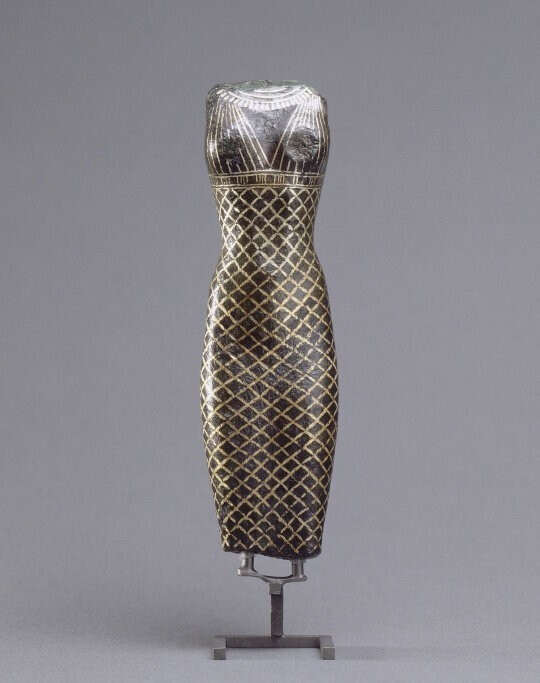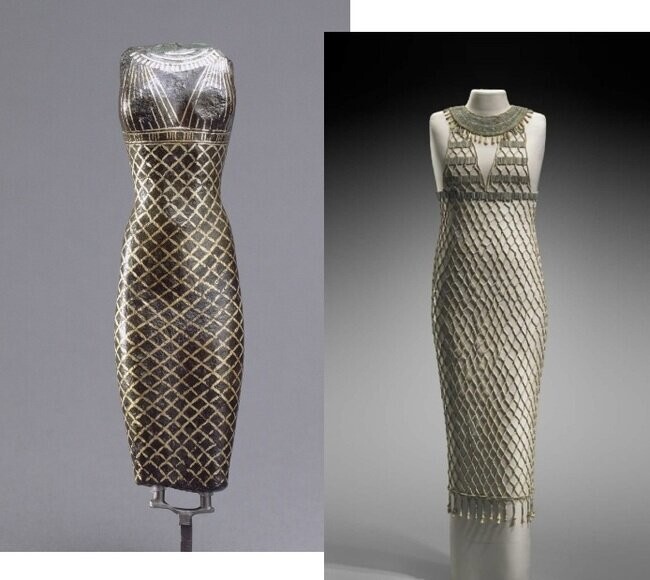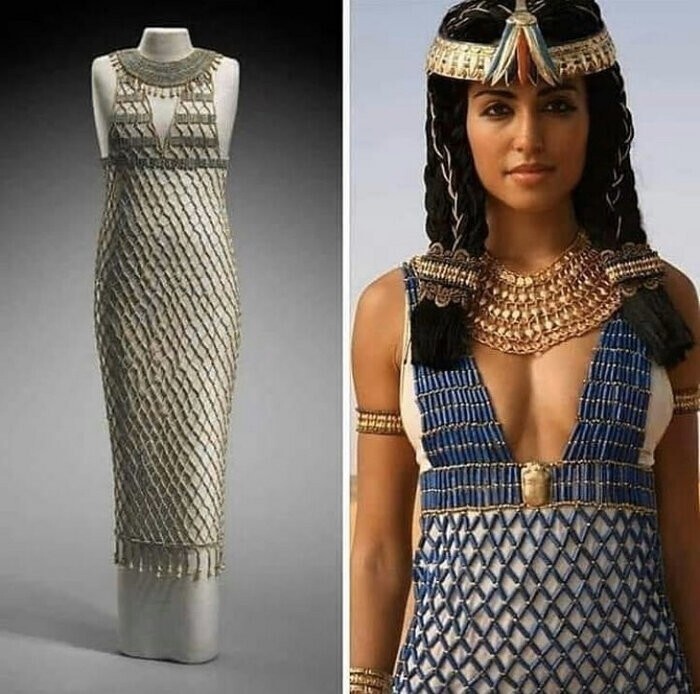Ancient Egypt is amazing and unpredictable. 
In front of you in the first photo is a bronze female torso in an openwork the dress, the pattern of the dress on it is gold inlay. Dating - III transitional period, 1069-664 BC Exhibit in the collection of the Louvre Museum. 
But in the next photo next to him ... No, this is not another statue, but a real openwork dress surprisingly similar to him, found in an ancient Egyptian tomb. 
But here's the bad luck - this dress is at least one and a half thousand years older than the statue from the Louvre! Imagine, 15 centuries have flown by, the Bronze Age ended, the great ones collapsed and rose from the ashes empire, and in Egypt noble women continued to wear such magnificent openwork dresses. This is really the fashion for the millennium! 
Reference: This beaded dress is the earliest of surviving examples of such clothing (only about 20 were found). It is carefully assembled from about seven thousand beads found in untouched burial of a contemporary of Pharaoh Khufu (the builder of the Great pyramids). Although the threads had decayed, several dozen beads still lay on its original place on and around the mummy, which allowed make an accurate reconstruction. The color of the beads has faded, but initially the mesh from beads it was bright blue and blue-green in color from Egyptian faience, imitating lapis lazuli and turquoise. Worn over a linen cape. Dating - Old Kingdom, IV dynasty, reign of Khufu - 2551-2528. BC. Found at Giza, tomb G 7440 Z.; expedition excavations Harvard University Museum of Fine Arts; 1927 For now Moment is an exhibit in the collection of the Boston Museum of Fine Arts, USA. 
Temporary reconstruction of a similar dress.
Add your comment
You might be interested in:






















